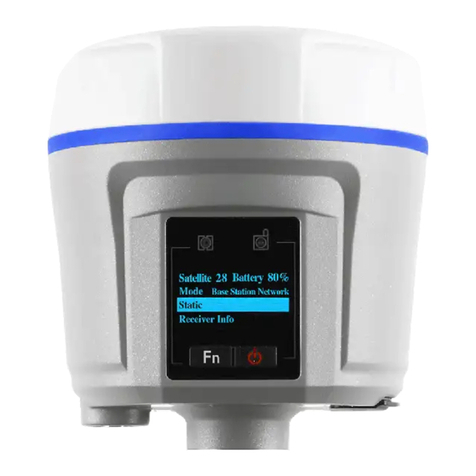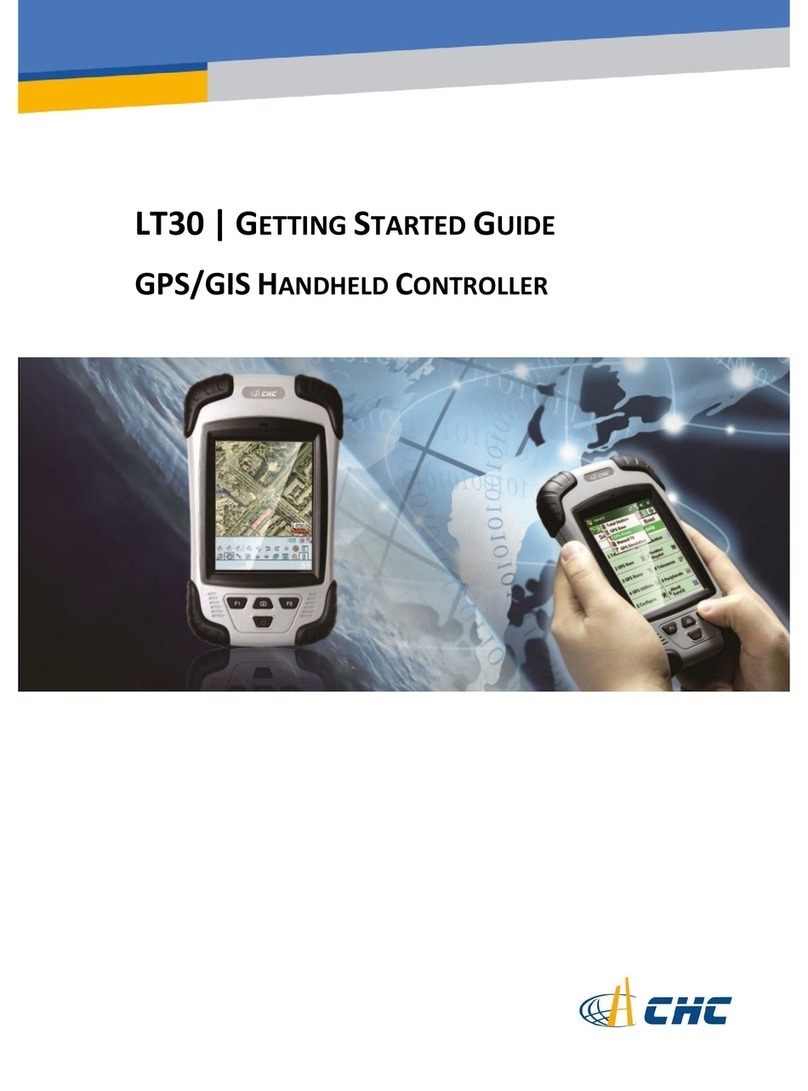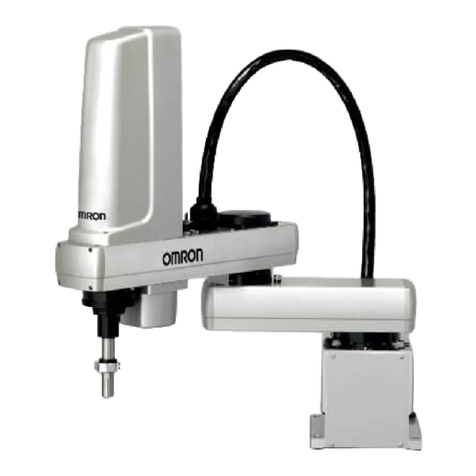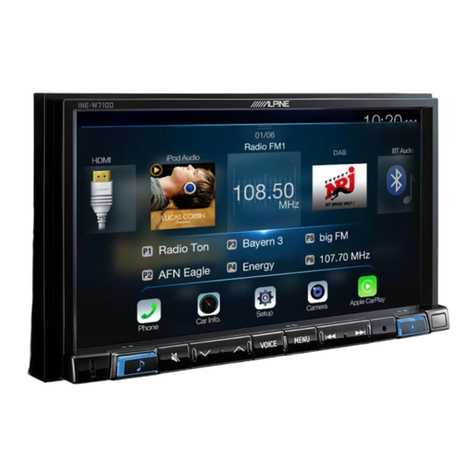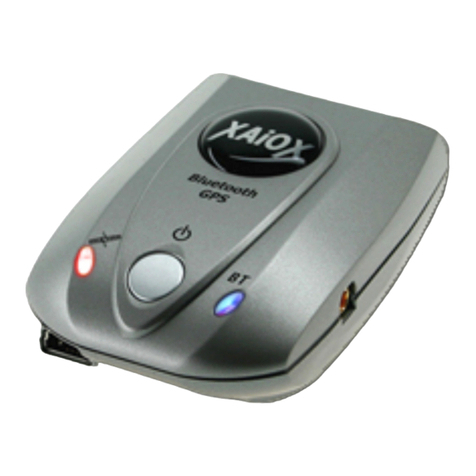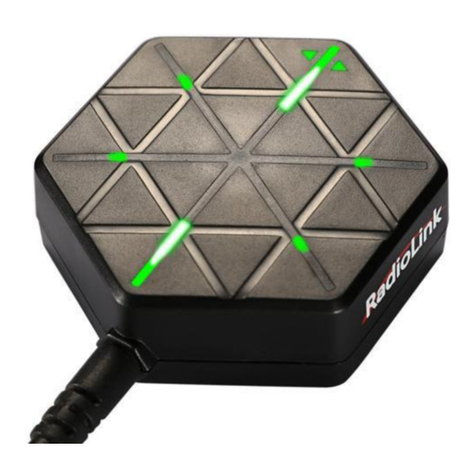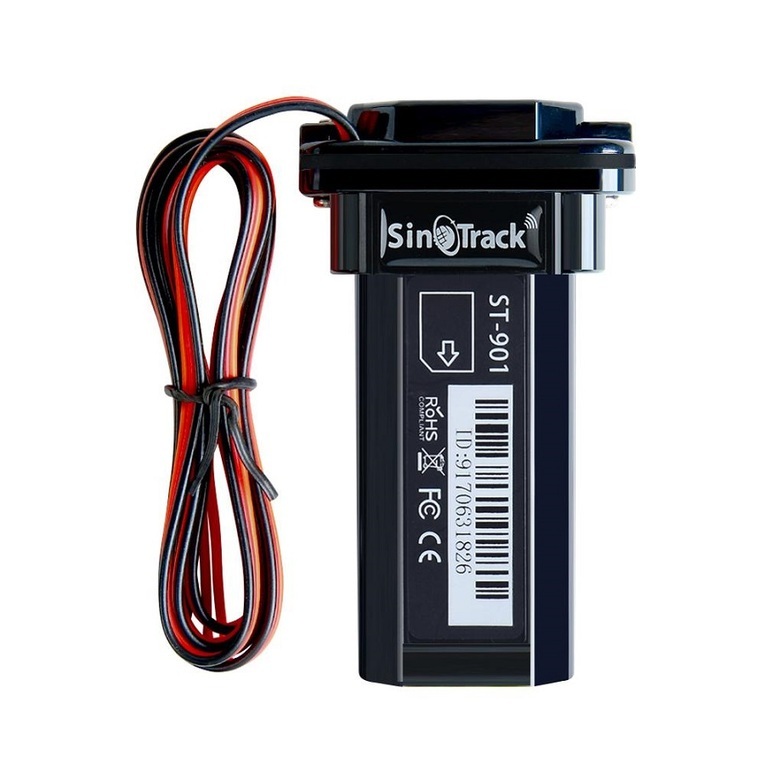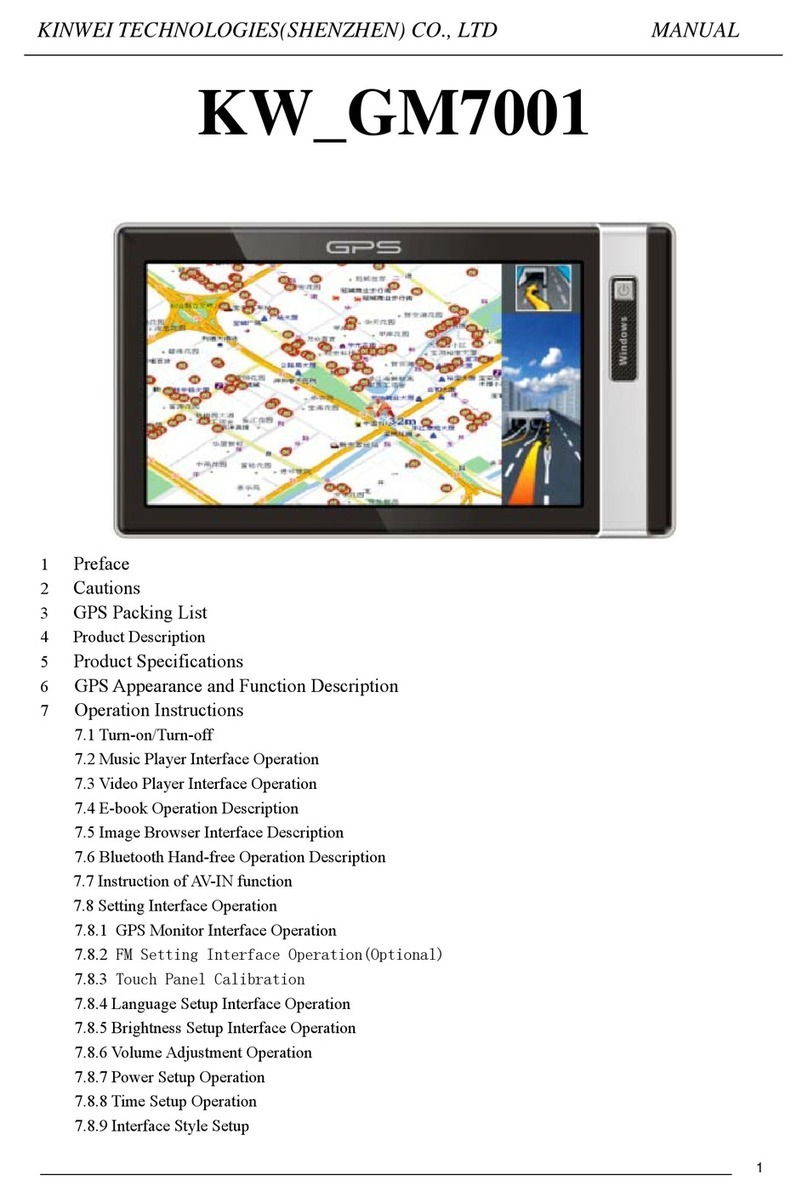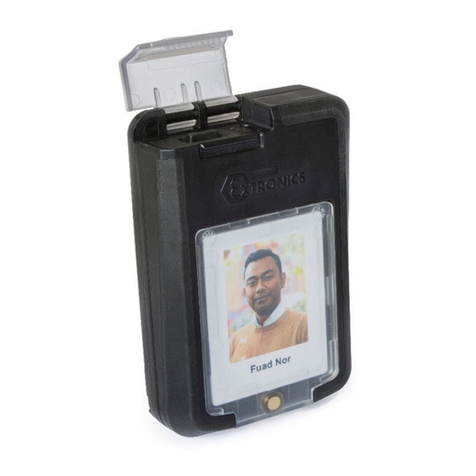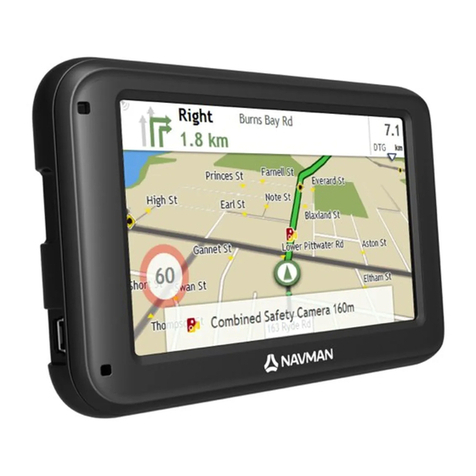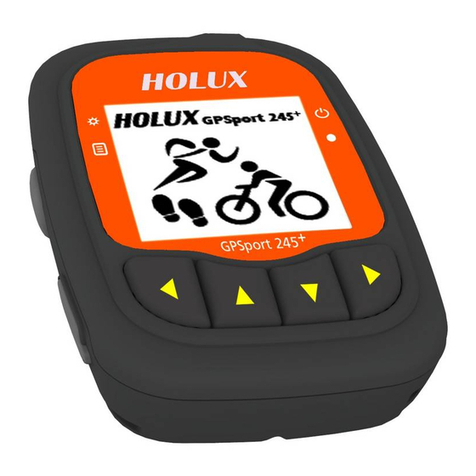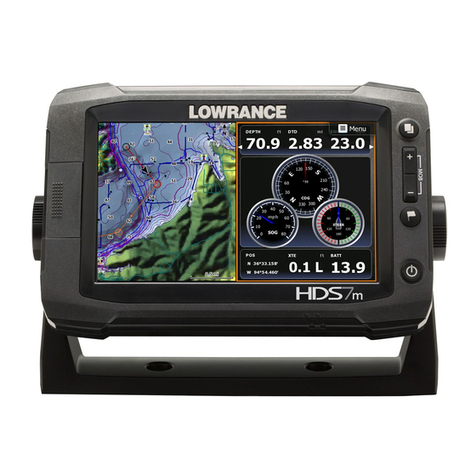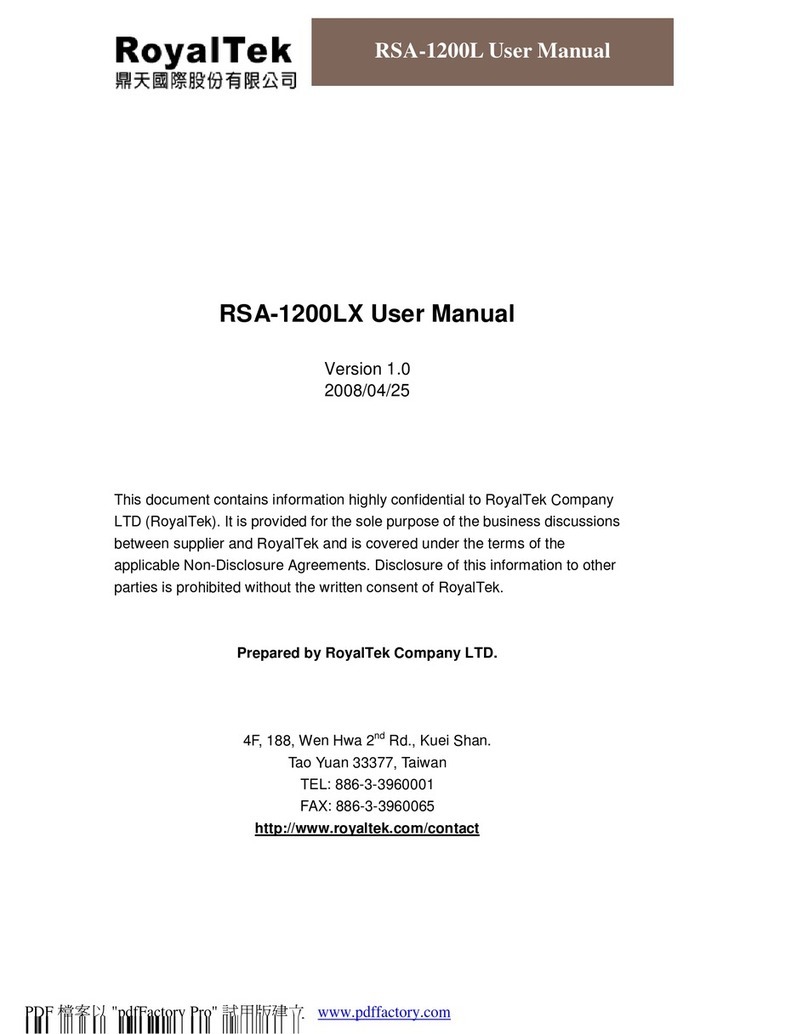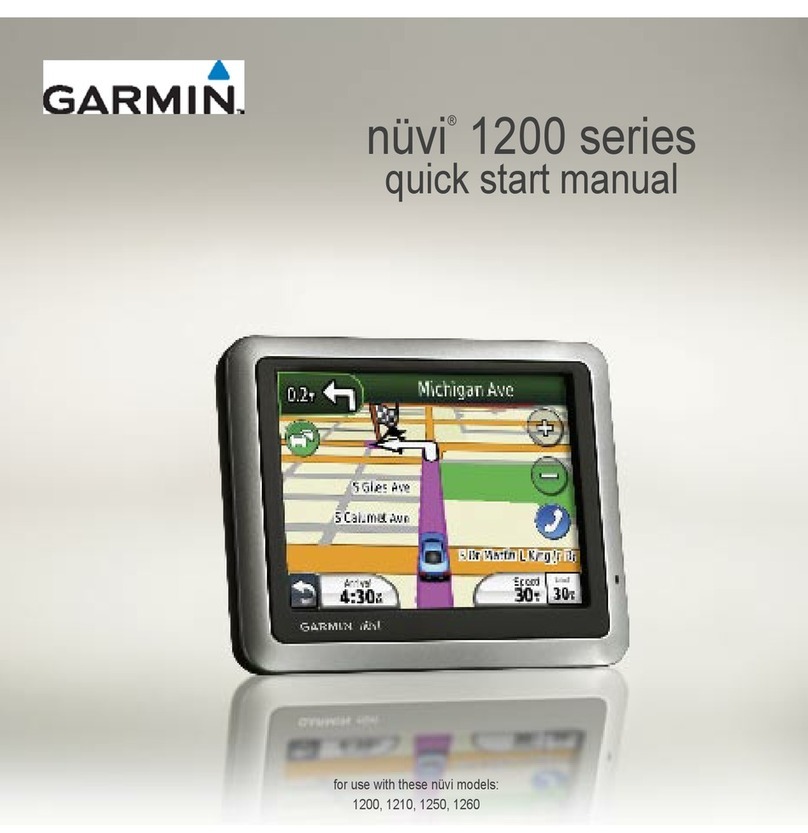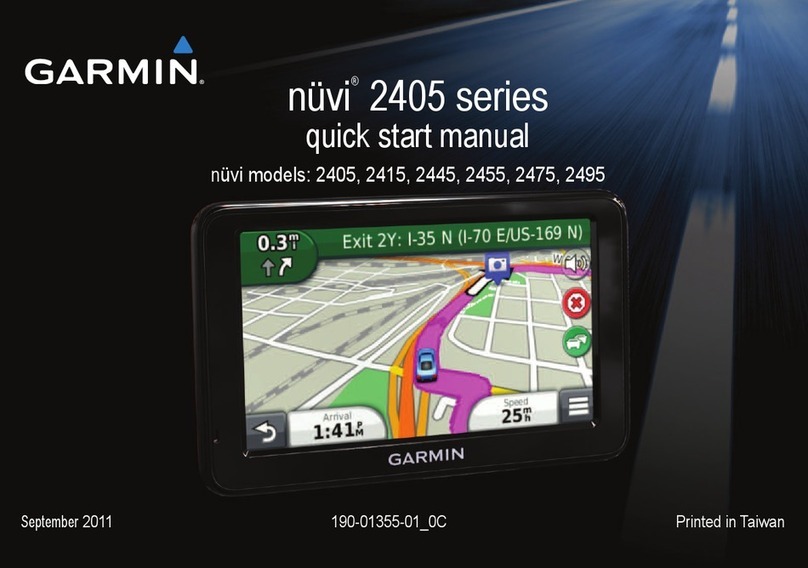CHC X900+ User manual

X900+ X91+
w/ CHC Radios
RTK GPS Receiver
User Manual
This manual is for use with X900+ and X91+ CHC receivers sold by iGage Mapping Corporation. Receivers with similar model
numbers typically will not match devices provisioned by iGage.
Revision N - 10 January 2015

iGage X9x User Manual page 2 of 53
Copyright 2014 iGage Mapping Corporation 2014.
All rights reserved.
This User Manual is for distribution with receivers sold by iGage Mapping Corporation. If you received this manual with the
purchase of equipment from another vendor, we would appreciate a call letting us know about it: please call +1-888-450-4922 toll
free!
iGage and ‘iGage Mapping Corporation’ are Trademarks of iGage Mapping Corporation of Salt Lake City Utah, USA.
CHC is a Trademark of Shanghai Huace Satellite Navigation Technology Limited of Shanghai, China
All product and brand names mentioned in this publication are trademarks of their respective holders.
FCC Notice: CHC X900+ and X91+ GPS receivers comply with the limits for a Class B digital device, pursuant to the Part 15 of the FCC
rules when it is used in the Portable Mode.
Operation is subject to the following two conditions:
(1) This device may not cause harmful interference
(2) this device must accept any interference received, including interference that may cause undesired operation
FCC Compliance:
Function
FCC-ID
Module Type
Bluetooth
RFR-B2029
Stollman
BlueMod+B20/AI/AP
3.75G WCDMA
module
RI7HE910
Telit HE910-D
2.5 G GPRS module
RI7GL865Q
Telit GL865-QUAD
2.75 G EDGE module
N7NQ2687
Sierra Wireless Q2687
Satel TR-Radio
MRBSATEL-TA13G
Satel SATELLINE-M3-TR1

iGage X9x User Manual page 3 of 53
Table of Contents
X900+ X91+ w/ CHC Radios RTK GPS Receiver
User Manual...................................... 1
FCC Compliance:.............................................. 2
Table of Contents.............................................. 3
Introduction ...................................... 4
Training Videos ................................................. 4
SurvCE Manual .................................................. 4
ADL Vantage Pro UHF Radio Manual................. 5
LT30 Data Collector........................................... 5
What’s in the Box .............................. 6
Safety Information ............................ 7
Warnings and Cautions ..................................... 7
Use and Care ................................................... 7
Battery Safety and Disposal............................. 7
Battery Warnings............................................. 7
Batteries .......................................................... 7
Battery Charger................................................. 8
Radio Hazards: .................................................. 8
Bluetooth Radio............................................... 8
UHF Radios ...................................................... 8
Safety and General Information ...................... 9
Medical Devices - Hearing Aids ....................... 9
Other Medical Devices .................................... 9
Blasting Caps and Areas................................... 9
FCC Licensing Information................................. 9
Front Panel Operation ..................... 11
Pushbuttons .................................................... 11
On/Off Pushbutton........................................ 11
‘Record Files’ Pushbutton.............................. 11
LED Indicators ................................................. 11
Power ............................................................ 11
SV’s (Satellite Count) ..................................... 11
Serial.............................................................. 11
Files ............................................................... 11
When the receiver turns on: ......................... 11
Setting Up an RTK Base Receiver...... 12
Choosing a Good Location for the Base......... 12
Configuring a UHF Base With External ADL Vantage Pro Radio
..... 12
Base Radio Battery ........................................ 12
Setting Up an ADL Vantage Pro Radio with Cable
Connection to Base.......................... 13
Configuring a UHF Rover.................. 21
Troubleshooting a UHF Base / Rover Pair ....... 24
Provisioning GSM SIM Card in Data Collector 25
Connect to Every Wi-Fi Access Point, NOT! 29
Configuring a NTRIP Network Rover . 30
Using the Internal GSM Modem in a X91+ or X900+
Receiver .......................................... 36
Troubleshooting a Network Rover .................. 38
Building, Loading and Using a GSF (GEOID
Separation File) ............................... 39
GEOID Tools................................................... 39
Building a GSF file for a Project: .................... 39
Connecting Data Collector by Bluetooth to PC
‘Windows Mobile Device Center’ ..... 41
X900+: Fixed –Verified Fix ............... 44
Collecting Static Data....................... 45
Downloading Observation Data from a Receiver
....................................................... 46
Troubleshooting the X91+ or X900+ Receiver 47
1. Receiver won’t turn on:............................. 47
2. Is the receiver tracking satellites? ............. 47
3. Is the receiver storing observation data? .. 47
4. The RED Power LED is flashing! ................. 47
5. The GPS receiver won’t mount as a Disk Drive. 47
Configuring the Radio Channel List in the Receiver
....................................................... 48
HCConfig ......................................................... 48
X9xRadioFrequency Tool................................. 49
X9x 10-Pin Connector....................... 50
X9x GPS to PC Data Cable................................ 50
Battery Clips .................................................... 51
Warranty......................................... 52
Exclusions ...................................................... 52
RMA............................................................... 52

iGage X9x User Manual page 4 of 53
Introduction
Thank you very much for choosing to purchase and use an X900+ or X91+ GPS receiver!
With a ground-breaking price, outstanding performance, field ready carry case and easy-to-use features, we know that a CHC GPS
receiver will be a valuable tool that quickly pays for itself.
The X900+ and X91+ receivers are nearly identical. The only differences are the external case style and the internal GNSS Engine.
X900+
X91+
GNSS Engine
Trimble BD970 GNSS Engine
Novatel OEM 6 (OEM 628)
Case Style
This guide is designed to help you familiarize yourself with your new equipment and to put it to use in the field.
If you have questions or suggestions, don’t hesitate to contact us:
iGage Mapping Corporation
1545 South 1100 East Suite 1
Salt Lake City UT 84105 USA
+1-801-412-0011
Your input is extremely valuable to us and we will listen to your suggestions!
Software updates and news are available from:
www.x9gps.com
Training Videos
Training videos specific to setting up a X9x Base, Rover and Network Rover are available from the
[ Videos ] link on the x9gps.com website.
If you are not familiar with any of these subjects:
US Survey Feet vs. International Feet (Video #1)
Grid vs. Ground Distance Measurements (Video #2)
Ellipsoid vs. Orthometric Heights (Video #3)
Setting up a Tripod/Tribrach (Video #66)
Check out the videos at www.igage.com/v
There are Carlson SurvCE specific videos that address scale factors and aligning measured and record data.
SurvCE Manual
An electronic copy of the manual for SurvCE can be found on the Carlson website:
www.survce.com
Click on ‘Software Download’ for version 3.0, then select product version 3.0 and click on ‘Show Files’. A link to the latest manual
version will shown:
In addition there are a variety of excellent SurvCE training videos available at the Carlson Software website:
www.carlsonsw.com

iGage X9x User Manual page 5 of 53
Click on the ‘Videos’ link on the right side of the page.
ADL Vantage Pro UHF Radio Manual
Your CHC receiver package may contain a high powered Pacific Crest ADL Vantage Pro radio or
repeater.
The manual for Pacific Crest ADL Vantage Pro radios can be found online:
http://www.pacificcrest.com/library/User_Guide_ADL_VantagePro.pdf
This manual contains extensive warnings and operation information.
LT30 Data Collector
You can download the CHC Factory Getting Started Guide from
www.x9gps.com
On the LT30 linked page.
Please note that iGage preloads ALL software, activates SurvCE and your LT30 will be ready to use, out of the box.
Please don’t reload the software, it should already be loaded.
Important things to remember:
Set the data collector to turn off the backlight after 30-seconds of inactivity.
Set the data collector to NEVER shutdown, it disrupts the Bluetooth connection.
Store jobs on the SD Card, they will be easier to transfer and there is unlimited space available.
Tapping the ON/OFF key puts the data collector in Standby
Push and hold the ON/OFF key for two seconds to turn the data collector OFF
Be careful when charging the LT30 in your vehicle. It is possible to snap the USB mini connector if you sit on the data collector with
the charging cable connected.
A software patch has been installed on your LT30 which allows the “F2” key to be used as an enter key, this allows for single button
shots in SurvCE.

iGage X9x User Manual page 6 of 53
What’s in the Box
Depending on your purchased configuration you will receive different accessories with your GPS head. Typically you will receive all
of these:
Carrying Case
Power Adapter with Cord:
GPS Head
Lithium-Ion Batteries
GPS to PC Data Cable:
Serial, USB and Ext. Power
Dual Battery Charger
In addition you may also receive:
A Data Collector
A Bracket to hold your Data Collector on a pole
A pole for the rover
A tripod for the base
An external radio for the base with cables and UHF antenna
External battery cables
Pole extension for elevating the GPS above a tripod head, allowing cable entry past a tribrach.

iGage X9x User Manual page 7 of 53
Safety Information
This manual describes the CHC X9x GNSS Receivers. Before you use your receiver, please make sure that you have read and
understood these warnings and safety requirements.
Warnings and Cautions
An absence of specific alerts does not mean that there are no safety risks involved. Warning and Caution information is intended to
minimize the risk of personal injury and/or damage to the equipment.
Use and Care
The X900+ and X91+ receivers are field ready instruments; however they are also delicate electronic instruments. Take suitable care
to avoid damage to the instrument.
Avoid dropping the receiver as it can change the phase center of the antenna!
Avoid storing the receiver at excessive temperatures (hot or cold) as it will damage the internal batteries.
Avoid storing the batteries at temperatures less than -40° F (-40° C) and temperatures higher than 160°F (70°C) as it will
permanently reduce the battery capacity and life
DO NOT leave the receivers or accessories inside a vehicle in the summer. Temperatures higher than 160°F will permanently reduce
battery capacity and battery life.
Battery Safety and Disposal
The batteries are lithium-ion type cells.
Battery Warnings
WARNING - Do not damage the rechargeable Lithium-ion battery. A damaged battery can cause an explosion or fire, and can result
in personal injury and property damage.
To prevent injury or damage:
Do not use or charge the battery if it appears to be discolored, warped, or leaking battery fluid.
Do not expose the battery to fire, high temperature, or direct sunlight.
Do not immerse the battery in water.
Do not store the battery inside a vehicle during hot weather.
Do not drop or puncture the battery.
Do not open the battery or short-circuit its contacts.
Do not charge the batteries in chargers other than the supplied charger or a direct replacement.
Do not charge similar batteries in the supplied charger, even if they fit well.
WARNING - Avoid contact with the rechargeable Lithium-ion battery if it appears to be leaking. The battery fluid is
extremely corrosive, and contact with it will result in personal injury and/or property damage.
If battery fluid gets into your eyes, immediately rinse your eyes with clean water and seek medical attention. Do not rub
your eyes!
If battery fluid gets onto your skin or clothing, immediately use clean water to wash off the battery fluid.
Batteries
One or two Lithium-Ion batteries are supplied with your receiver.

iGage X9x User Manual page 8 of 53
Each battery, when new, will power the receiver for 4-hours at temperatures higher than 50 degrees F. At lower temperatures
battery life is shortened.
If you plan on running a base receiver for longer than 4-hours, it is suggested that you use a Battery Clip Cable to connect the
auxiliary power connector to an external 12 volt battery.
If you are using a base receiver with an external radio, the radio cable supplies both the radio and the head.
Fully charge the batteries using the supplied charger before first use.
Battery Charger
Plug the charger into the supplied wall transformer or use the supplied alligator clip cable to connect to a 12 Volt battery.
The YELLOW LED lights when the left
battery is inserted
The RED LED lights when power is
connected to the charger
The Green LED lights when the right
battery is inserted
-- -- -- -- -- When charging begins the
LED’s blink quickly
-- -- -- As the batteries reach full
charge, the LED’s blink slower
--------------------- When the LED’s stop blinking,
the batteries are fully charged.
It is okay to leave charged batteries in the charger for extended periods of time.
TOO COLD: Do not leave charged or uncharged batteries in your vehicle at night if the temperature will be less than 20
deg F. Extreme cold battery storage will permanently reduce the capacity and lifetime of the batteries.
TOO HOT: Do not leave charged or uncharged batteries in your vehicle on hot days with the windows rolled up when
temperature will be higher than 90 deg F. Hot temperatures will permanently reduce the capacity and lifetime of the
batteries.
Radio Hazards:
Bluetooth Radio
Radiated output power from the internal Bluetooth radio is far below FCC radio frequency exposure limits. The Bluetooth radio
operates within guidelines for radio frequency safety standards and recommendations, which reflect the consensus of the scientific
community.
The level of energy emitted is far less than the electromagnetic energy emitted by wireless devices such as mobile phones.
However, the use of wireless radios may be restricted in some situations or environments, such as on aircraft.
UHF Radios
The Pacific Crest ADL Vantage Pro 35-watt radio is used as a base radio. Consult the

iGage X9x User Manual page 9 of 53
When used in the transmitting mode, even though the broadcast power is relatively low, you should take these additional
precautions:
Medical Devices - Pacemakers
The Advanced Medical Technology Association recommends that a minimum separation of 6 inches (15 cm) be
maintained between a handheld wireless radio and a pacemaker. These recommendations are consistent with the
independent research by, and recommendations of the U.S. Food and Drug Administration.
Persons with pacemakers should:
• ALWAYS keep the radio more than 6 inches (15 cm) from their pacemaker when
the radio is turned ON.
• Not carry the radio in the breast pocket.
• Use the ear opposite the pacemaker to minimize the potential for interference.
• Turn the radio OFF immediately if you have any reason to suspect that interference is taking place.
Safety and General Information
Medical Devices - Hearing Aids
Some digital wireless radios may interfere with some hearing aids. In the event of such interference, you may want to
consult your hearing aid manufacturer to discuss alternatives.
Other Medical Devices
If you use any other personal medical device, consult the manufacturer of your device to determine if it is adequately
shielded from RF energy. Your physician may be able to assist you in obtaining this information.
Blasting Caps and Areas
To avoid possible interference with blasting operations, turn off your radio when you are near electrical blasting caps, in a
blasting area, or in areas posted: “Turn off two-way radio.” Obey all signs and instructions.
FCC Licensing Information
These devices:
X91+Satel(1191806826)
X900+Satel(1192507826)
ADL Vantage Pro (82218-10)
Include transmit –receive UHF radios and require FCC Licensure for operation in the United States. It is illegal to operate these
devices in Transmit mode without the appropriate license. In addition these devices must have CSMA and Call Sign broadcast
enabled when operated in transmit mode.
This link:
http://www.amerisurv.com/PDF/TheAmericanSurveyor_Silver-PirateSurveyors_Jan2014.pdf
Describes the pitfalls of broadcasting without a license. This link:

Front Panel Operation
X91+ Front Panel X900+ Front Panel
Pushbuttons
The front panel has two pushbuttons On/Off and ‘Record Files’:
On/Off Pushbutton
Press the On/Off button for 1-second and release to turn ON the receiver.
‘Record Files’Pushbutton
When the Record Files button is pressed for one second the receiver toggles from collecting data, to not collecting data. The yellow
Files LED will stop flashing when recording stops.
When the receiver is not recording, pressing the record button again for one second will open a new observation file and begin
collecting observation data (in a new file) again.
You can also use the Record button to check the current mode: recording or not recording.
Tapping the Record button will cause either the Serial or the Files button to flash:
Serial green receiver is recording
Files yellow receiver is NOT recording
LED Indicators
There are four LED indicators on the receivers:
Power
Red Power ON. If flashing, the battery charge is low and the receiver will turn off soon
SV’s (Satellite Count)
Blue Blinks once for each tracked satellite, waits 5-seconds, repeats.
Serial
Green Blinks when RTK correction data is received by the serial port. Blinks when the ‘Record Files’ button is pressed if
the receiver is storing to a static file.
Files
Yellow Blinks each time data is stored to the static file. Blinks when the ‘Record Files’ button is pressed if the receiver is
NOT storing a static file.
When the receiver turns on:
All LEDs will flash.
The receiver will automatically begin searching for satellites. As satellites are found, the Blue LED will indicate the number of
tracked satellites.
To turn the receiver off, press and hold the On/Off button for one second. All four LED’s will quickly flash three times and the
receiver will power down.

iGage X9x User Manual page 12 of 53
Setting Up an RTK Base Receiver
Choosing a Good Location for the Base
The location of your base greatly impacts the success of your survey. There are two primary concerns:
1. Minimizing multipath and obstructions between the base and the sky
2. Maximizing the effective range of the UHF radio which is broadcasting corrections to the rover
Any multipath or obstructions at your base will affect every single shot at your rover, just as if they existed at the rover. Your
primary concern should be finding an open location for the base that minimizes multipath (via GNSS signal reflections on hard
surfaces.)
A clear view of the sky above a 10 degree mask is also important. Partially obstructed/masked satellites (through tree branches) are
worse than fully obstructed satellites. Clearance to the South, East and West is most important. Obstructions directly to the North
have the least effect on your RTK and static solutions.
When using a UHF radio, your ability to place the UHF antenna in a high location with the minimum of obstructions to your working
area is also important.
Configuring a UHF Base With External ADL Vantage Pro Radio
Base Radio Battery
iGage does not provide a battery for use with the Base. A suitable battery can be sourced locally. Most deep cycle ‘Marine’ battery
or closed cell battery will work well.
There may be some advantage to a closed cell marine battery like the Optima series:
However at three times the price of a standard Marine deep cycle battery:
The standard wet-cell battery may be a better value.
The duty cycle of the radio in normal operation is about 50% and the radio draws about 8 amps at full output power. So a 9-hour
day requires about 40 amp hours. However the battery requirement is greatly increased for operation in cold weather and the
battery’s capacity is reduced after several discharge cycles.
The less the battery is discharged as a function of its maximum capacity, the more charge cycles the battery will accept.
For these reason, when purchasing a battery for the base: big-is-certainly-better.
iGage includes both alligator clips AND lug connectors for the battery. A solid lug connection is best. You will not be able to
broadcast at full power with the alligator clips and you run the risk that the clips will overheat. Deep cycle marine batteries include
terminals that will directly accept the lug connectors and you should use them.
Before plugging in the UHF radio, always insure that the antenna has been connected. Double check that the polarity (RED = +;
BLACK = -) is correct before attaching the power connector.

iGage X9x User Manual page 13 of 53
Setting Up an ADL Vantage Pro Radio with Cable Connection to Base
1. Place the GPS receiver on the tripod.
Set the UHF radio antenna to the North of the GPS
receiver.
Raising the UHF antenna’s height will greatly increase
the range for a given radio output power. Height
trumps output power.
NOTE: The radio automatically drops the output power
as required to keep the case at a reasonable
temperature. In hot weather fashion a shade (as simple
as a piece of cardboard) over the top of the radio to
keep direct sunlight from heating the case.
For operation in extreme heat, a fan cage:
is available to force cool the fins on the radio back.
2. Connect the UHF Radio antenna to the radio mast,
connect to the antenna port on the ADL Vantage Pro.
DO NOT plug power into the ADL radio until the UHF
antenna has been connected and placed on the mast.
DO NOT hold the antenna or touch the antenna when
power is applied or turned on to the ADL radio. The
radio can output sufficient power to burn you.
DO NOT place the UHF antenna to the South of the
receiver. The UHF antenna will block the GPS antenna’s
view of satellites to the South. (There are very few SV’s
to the North of your GPS receiver so the impact is
minimized.
3. Connect the GPS/PCC serial cable to the GPS receiver
and to the radio.
WARNING! The Y-Cable has two ends that have the
same diameter, however one side has 10 pins (GPS) and
the other side has 5 pins (RADIO)! If you interchange
the cable ends, you will ruin the cable. This failure is
not covered by warranty.
The Y cable end with the flat SAE connector and the
round cable plugs into the radio:
The simple cable end plugs into the Base GPS:
4. Connect the Y connector power cable to the battery.
DOUBLE CHECK THE POLARITY (RED to +) (BLACK TO -)
and then plug in the radio Y connector.

iGage X9x User Manual page 14 of 53
The radio will turn on when power is applied.
NOTE: The radio will always turn on when power is
applied. So make sure the UHF antenna is connected
prior to attaching power to the radio!
IMPORTANT: Before you remove power from the radio,
ALWAYS turn the radio off with the power switch. Push
and hold the Power ON/OFF button for five seconds,
then wait for the radio to power down:
Alternatively you can disconnect power at the SAE (the
flat two-pin connector.)
5. After 5 minutes, the LCD display is placed in sleep
mode. Press and hold the ON/OFF button for 1-second
to turn the LCD display back on.
6. Verify the radio settings if they might have been
changed:
NOTE: If you change a value, be sure to press the
center Enter button to store the change.
a. When you turn on the receiver, the device
status will be shown. Check to insure the
battery charge level is ‘Normal’.
b. Press the ‘right-arrow’ to move the next
screen. The current transmit channel will be
shown. The RX LED should not be on or
flickering. If it is, then another person is using
the selected channel. You can use the up and
down arrow buttons to choose an alternate
channel/frequency, then press the Enter
button to select the new channel. The
current channel is indicated by an asterisk as
shown below:
You MUST set the Rover radio frequency to
match this setting.
c. Press the ‘right arrow’ to view the ‘Data
Protocol’. “Trimmark 3”is the correct setting
and corresponds to the ‘CHC’ setting on the
data collector:
d. The Radio Link Rate is the ‘over the air’ baud
rate. The correct value is 9600.
NOTE: 50% of all RTK Radio Problems are due
to incorrect Radio Link and Serial Baud Rate
settings. To reduce the chance of bad
configurations we have forced all of the baud
rates to be 9600. (In other words, the answer
is always 9600 for the Internal CHC radio.)
If your head has an internal Satel radio, the
answer may be 4800 for some applications.
e. Set the Operation Mode to Base/Rover:
f. Set the RX Sensitivity (for the base) to Low.
This prevents the base radio from listening to

iGage X9x User Manual page 15 of 53
distant users.
g. Set the Transmit Power to the lowest power
that will cover your job. Use the up and down
arrow keys to select, press enter when the
proper selection is made.
h. Set RX LED to Signal Received:
i. The Serial Baud is the baud rate over the
serial cable to the GPS receiver. This is fixed at
9600 baud on the receiver.
j. Press the ‘right-arrow’ to skip Signal Strength:
k. Press the ‘right-arrow= to skip Advanced
Menus Show:
l. CSMA (Collision Sense Multiple Avoidance)
must be left ON in the USA to meet FCC
requirements:
When CSMA is turned ON, the radio will listen
for other data or voice users on the
programmed frequency. The radio will wait
until they stop broadcasting before
transmitting.
m. Click the ‘right-arrow’- to skip the Edit Config
screen:
n. Choose the appropriate language:
o. Leave ‘Antenna Detect’ set to ON. If you
power the radio up without an antenna or
your antenna is damaged, then the radio will
detect this error and turn the output power
down to 2 watts. This will prevent the output
amplifiers from burning up:

iGage X9x User Manual page 16 of 53
If you know the attached antenna will always
be good, you can disable antenna detection.
This will prevent the radio from down-
powering and the radio will always output the
selected power. (Assuming the radio is cool
enough.)
p. The Antenna VSWR displays the Standing
Wave Ratio. Any value less than 4:1 is
reasonable. The lower the number, the
better:
Values higher than 8:1 result in a ‘no antenna
connected message.’
q. One last right click and you are back to the
Device Status:
r. Clicking the ‘down-arrow’ will display the
owner name:
s. Down arrow to the FCC ID which is
transmitted in Morse Code every 15 minutes:
t. The modulation type is GSMK:
u. In almost all cases for all current FCC licenses
in the United States, the channel bandwidth
must be 12.5 KHz or less to meet current FCC
requirements:
v. This screen indicates if the transmitter is
enabled and what the output power is:
On hot days, it is possible that the radio
power setting is higher than the enabled
value. Power will also be reduced if Antenna
Detect is enabled and a fault is detected.
w. This is the internal temperature of the
receiver:
Power management becomes active when
this temperature is higher than 85 deg C.
x. 30 seconds after you switch to the DutyCycle
screen, the transmit duty cycle of the receiver
is shown:

iGage X9x User Manual page 17 of 53
y. This is the firmware revision currently running
in the radio:
z. Finally the regulatory region code is
displayed:
7. Turn on the data collector and start SurvCE from the
Start Menu. Click on the Equipment tab:
8. Click on the “2. GPS Base” button:
9. Select the correct manufacturer (CHC) and device
(X900+ or X91+):
10. Click on the Comms (tab):
11. Click on the Hammer/Wrench to the right of the ‘BT
Type’:
12. Click on the ‘Find Device’ button and the data collector
will look for every available Bluetooth device:

iGage X9x User Manual page 18 of 53
NOTE: If you choose to manually setup a Bluetooth
connection to a CHC base or rover, then you may need
a passcode. The default passcode is ‘0000’.
Using SurvCE to establish the Bluetooth connection (the
preferred method) will automate the process and no
code is needed.
13. Select the correct receiver, the listed name matches the
device serial number:
14. Click on the green check mark:
15. Click on the blue and white Bluetooth icon button to
the left of the red X:
16. Select the Receiver tab:
NOTE: for most applications 1Hz is preferred on the
Base. With 1 Hz on the base, it is still possible to select
2 or 5 Hz on the rover.
Make sure the ‘Antenna Height is correct for your
tripod configuration. You can type “2M”:

iGage X9x User Manual page 19 of 53
SurvCE will convert to your job’s units as appropriate:
17. Next select the RTK tab.
Set the Device to ‘Cable or Generic Device’ and choose
CMR+, RTCM3.0 or RTCM3.2 for the message type.
NOTE: You may choose CMR+ or RTCM3 for the
message type, however the Base and Rover MUST
Match Exactly!
Typically X900+ = RTCM3.2
X91+ = CMR+
18. Click on the green check mark (upper right) and SurvCE
will configure the receiver:
19. After 10 seconds, you are prompted to enter a position
or read the GPS. Select the correct option for your job:
20. If you choose to ‘Read From GPS’:

iGage X9x User Manual page 20 of 53
21. Select an appropriate number of samples to average,
then click on the green check mark:
22. Let the average complete:
Enter a unique broadcast ID to differentiate your
receiver:
Note: The Broadcast ID should be in the range of 0 to
64 for CMR. Once a rover locks on to a correction
stream with a specific Broadcast ID, the rover will not
listen to another ID without being rebooted or reset.
23. Click on Yes, then after a few seconds:
24. After a moment, SurvCE asks:
25. Answer Yes to complete the base configuration.
26. At this point, check the red TX LED on the radio, it
should blink once every second.
The base is set and is broadcasting corrections to
rovers.
27. After starting the base, check if the Yellow files LED is
blinking once each second. If not, click and hold the
Files button on the receiver front for one second to
begin storing carrier phase data. You may want to have
this data to submit an OPUS solution or to process
static shots taken with the rover.
IMPORTANT NOTE:
If you click on ‘Equip: Monitor Skyplot’ after configuring the
base, the base may be disconnected from the radio and
corrections will no longer be broadcast.
Once the base has been configured and is broadcasting
corrections, don’t enter the monitor skyplot screen.
This manual suits for next models
1
Table of contents
Other CHC GPS manuals

